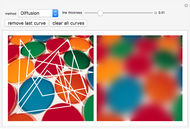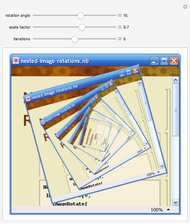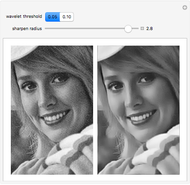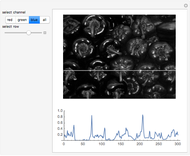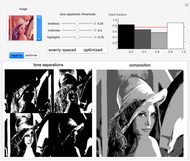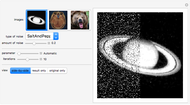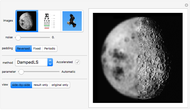Image Deconvolution

Requires a Wolfram Notebook System
Interact on desktop, mobile and cloud with the free Wolfram Player or other Wolfram Language products.
Image deconvolution is used to restore images degraded by blur and noise. In this Demonstration, three images degraded by various types of blurs can be restored using eight different deconvolution methods. The first four algorithms (DampedLS, Tikhonov, TSVD, and Wiener) use simple spectral filtering techniques, while the other four methods demonstrate an iterative deconvolution approach. You can control the amount of additive noise and the type of padding used.
Contributed by: Piotr Wendykier (March 2011)
Open content licensed under CC BY-NC-SA
Snapshots
Details
References
[1] R. C. Gonzalez and R. E. Woods, Digital Image Processing, Reading, MA: Addison–Wesley, 1993.
[2] P. C. Hansen, J. G. Nagy, and D. P. O'Leary, Deblurring Images: Matrices, Spectra, and Filtering, Philadelphia: SIAM, 2006.
[3] T. F. Chan and J. Shen, Image Processing and Analysis: Variational, PDE, Wavelet, and Stochastic Methods, Philadelphia: SIAM, 2005.
[4] W. H. Richardson, "Bayesian-Based Iterative Method of Image Restoration," Journal of the Optical Society of America, 62(1), 1972 pp. 55–59.
[5] L. B. Lucy, "An Iterative Technique for the Rectification of Observed Distributions," The Astronomical Journal, 79(6), 1974 pp. 745–754.
[6] D. S. C. Biggs and M. Andrews, "Acceleration of Iterative Image Restoration Algorithms," Applied Optics, 36(8), 1997 pp. 1766–1775.
[7] J. G. Nagy, K. Palmer, and L. Perrone, "Iterative Methods for Image Deblurring: A Matlab Object-Oriented Approach," Numerical Algorithms, 36, 2004 pp. 73–93.
Permanent Citation
"Image Deconvolution"
http://demonstrations.wolfram.com/ImageDeconvolution/
Wolfram Demonstrations Project
Published: March 7 2011






